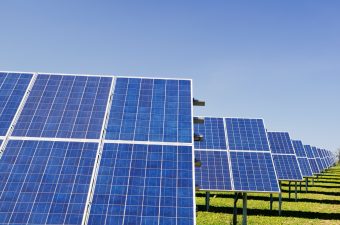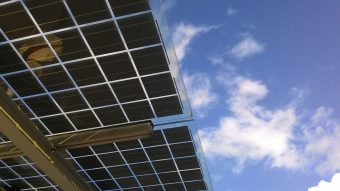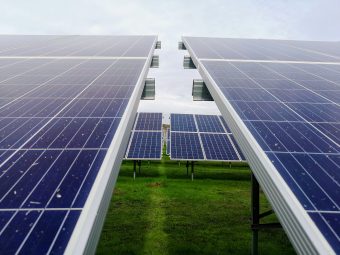
Heatwaves are good for generating solar energy – right?
Well, yes and no.
Recent hot weather has generated record amounts of solar power.
Germany broke a new record for solar power generation, and, in the United Kingdom, solar power met up to a quarter of the nation’s power needs, according to the news site Energy Live News.
But too much heat can actually be bad for solar panels.
How does extreme heat affect solar panels?
Heat can “severely reduce” the ability of solar panels to produce power, according to CED Greentech, a solar equipment supplier in the United States.
Depending on where they’re installed, hot temperatures can reduce the output efficiency of solar panels by 10 percent-25 percent, the company says.
According to the American renewable energy website EnergySage, solar panels are tested at 25°C (77°F) and generally have a temperature range of between 15°C and 35°C. Solar cells – the electronic devices that convert sunlight into electricity that are connected together to build solar panels – produce solar power most efficiently within this range.
But solar panels can get as hot as 65°C (149°F), EnergySage says. This can affect the efficiency of solar cells.
Why do solar panels struggle in very hot weather?
The impact of heat on solar panels is to do with the laws of thermodynamics – the science of heat and how it affects things.
The electricity generated by solar panels comes from a flow of particles called electrons inside the electrical circuit, explains news site Euronews.
When temperatures soar, these electrons can bounce around too much – and this reduces voltage, or the amount of electricity generated.
Too much heat also reduces the efficiency of the solar panel, by 0.5 percentage points for every degree Celsius rise in temperature.
More:
What can be done about overheating solar panels?
How hot your roof is likely to get during the year is one of the factors that solar panel installers will consider when designing a solar panel system.
Ways to reduce the impact of hot weather include mounting solar panels a few inches above the roof, explains CED Greentech. This allows airflow to cool the panels.
Using solar panels that are built with light-coloured, reflective material can also reduce the amount of heat they absorb.
Electronic components that operate the solar panels can be installed in a shaded area behind the panels to help stop them from becoming too hot.

Does very hot weather affect other energy sources?
Solar panels aren’t the only energy system impacted by high temperatures.
Nuclear power plants and other types of thermal plants – which convert heat into electricity – can also be affected.
According to an expert interviewed by Fortune magazine, all types of thermal power plants – whether coal-fired, gas-fired or nuclear – need huge amounts of water to keep them cool.
In France, the heatwave cut electricity output from two nuclear power plants when the hot temperatures warmed water in the nearby Rhône River used to cool nuclear reactors, Fortune notes.
What do rising temperatures mean?
The rising global temperature – caused by growing levels of greenhouse gases like carbon dioxide in the atmosphere – is increasing the frequency and intensity of heatwaves around the world.
Unprecedented heatwaves are breaking temperature records this year in countries and continents, including India, Pakistan, Australia, Europe, North Africa and the United States.
In a blog for the World Economic Forum, climate change expert Bob Ward says: “The threat of heatwaves will carry on climbing while greenhouse gas levels continue to accumulate.”

Adapting infrastructure and communities to climate change is a vital part of tackling the climate crisis – alongside reducing greenhouse gas emissions.
Climate adaptation needs investment. In developing countries alone, the United Nations Environment Programme estimates the cost of climate adaptation will be between USD 140- USD 300 billion a year by 2030, and between USD 280- USD 500 billion a year by 2050.
What does this mean for the renewable energy industry?
In industry, climate adaptation includes redesigning products and systems to be more resilient to climate change impacts like more extreme weather.
The solar energy industry is already developing technology innovations to help solar panels work in even the harshest conditions. Researchers are even exploring how solar panels might work at night.
Renewable energy, including solar power, is already a big part of climate mitigation – ways to reduce or remove greenhouse gas emissions.
Last year, wind and solar generated a record 10 percent of the world’s energy.
By 2050, renewables could supply four-fifths of the world’s electricity, according to the International Renewable Energy Agency (IRENA). This could “massively” cut carbon emissions and help to mitigate climate change, it says.
But to get there, innovation needs to be accelerated in business and technology, IRENA adds.
Source: World Economic Forum



